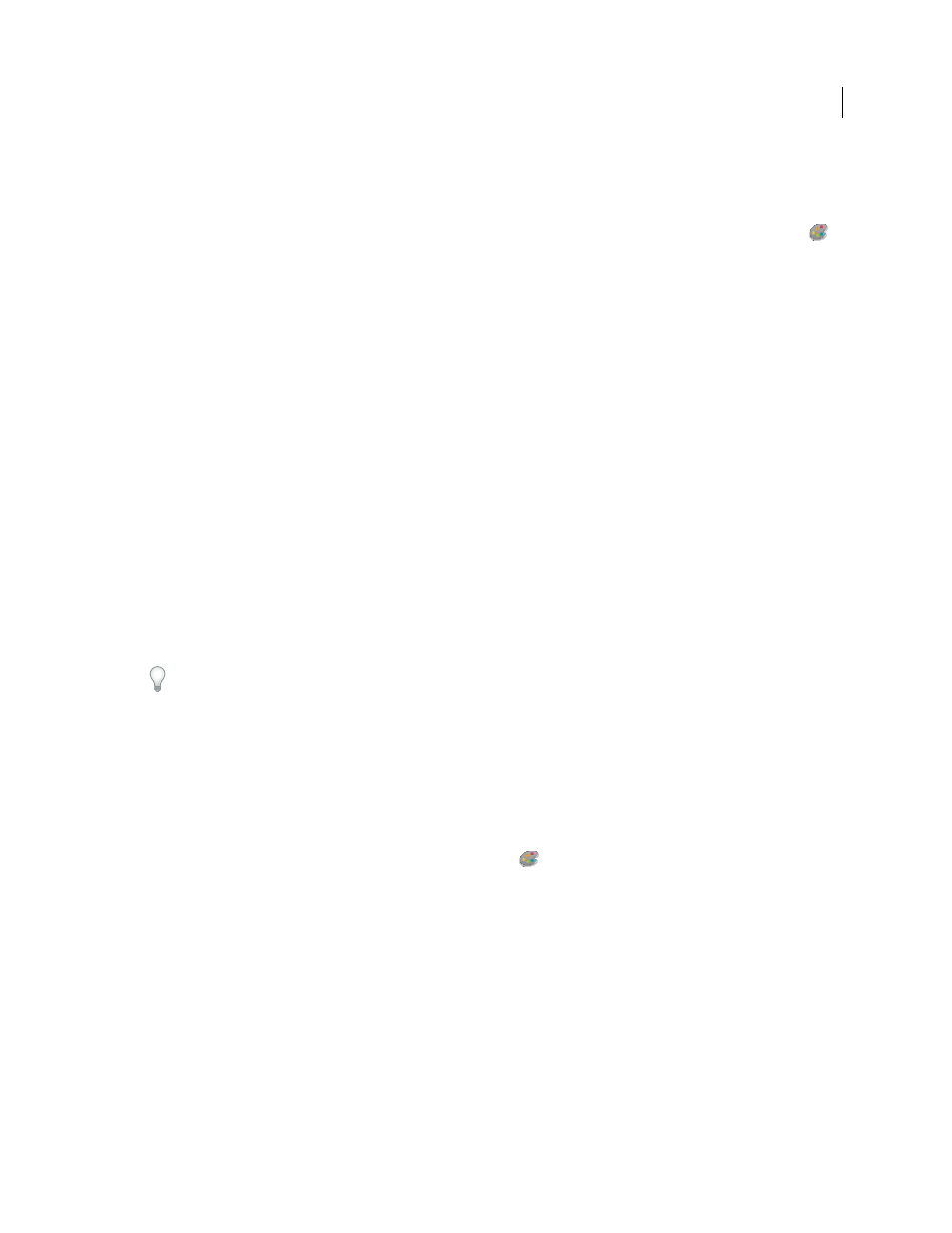Gradient types, Create drop shadows – Adobe Premiere Elements 8 User Manual
Page 240

235
USING ADOBE PREMIERE ELEMENTS 8 EDITOR
Creating titles
Last updated 8/12/2010
•
To set the color numerically, set the R, G, and B values by dragging the value or clicking and entering a number.
Gradient types
To access gradient types, select a title object in the Monitor window, and then click the Color Properties button
.
Solid
Creates a fill of uniform color.
Linear Gradient, Radial Gradient
Linear Gradient creates a linear, two-color gradient fill. Radial Gradient creates a
circular, two-color gradient fill.
The beginning and ending gradient colors are displayed, respectively, in the left and right boxes, or color stops. Select
a color stop prior to choosing its color. Drag the color stops to adjust the transition smoothness between the colors.
The Angle option (available for Linear Gradient only) specifies the angle of the gradient. The Reverse option reverses
the color spots. The Repeat option (available for Radical Gradient only), specifies the number of times to repeat the
gradient pattern.
4-Color Gradient
Creates a gradient fill composed of four colors, with a color emanating from each of the object’s
corners.
Four color stops specify the color that emanates from each corner of the object. Select a color stop prior to choosing
its color.
Bevel
Adds a beveled edge to the background. The object and bevel colors are displayed, respectively, in left and right
color boxes. Select the box you want to adjust prior to setting its color. The Balance option specifies the percentage of
the bevel that the shadow color occupies.
Eliminate
Creates a transparent fill that casts no shadow. If the object has a stroke, the stroke may be visible.
Ghost
Creates a transparent fill that casts a shadow. Specify shadow options in the Color Properties dialog box.
Eliminate and Ghost work best with objects that have shadows and strokes.
Create drop shadows
You can add a drop shadow to any object you create in the Monitor panel. A drop shadow can make an object appear
three-dimensional and help make it stand out from the background image. For example, adding a drop shadow to text
can make it more legible when superimposed on a complex background image.
1 If necessary, double-click the title in the Timeline to open it in the Monitor panel.
2 Select an object, and then click the Color Properties button
.
3 In the Color Properties dialog box, select Drop Shadow.
4 Set any of the following:
Angle
Specifies the angle of the shadow in relation to the object.
Distance
Specifies the number of pixels that the shadow is offset from the object.
Softness
Specifies how blurry or sharp the shadow appears.
